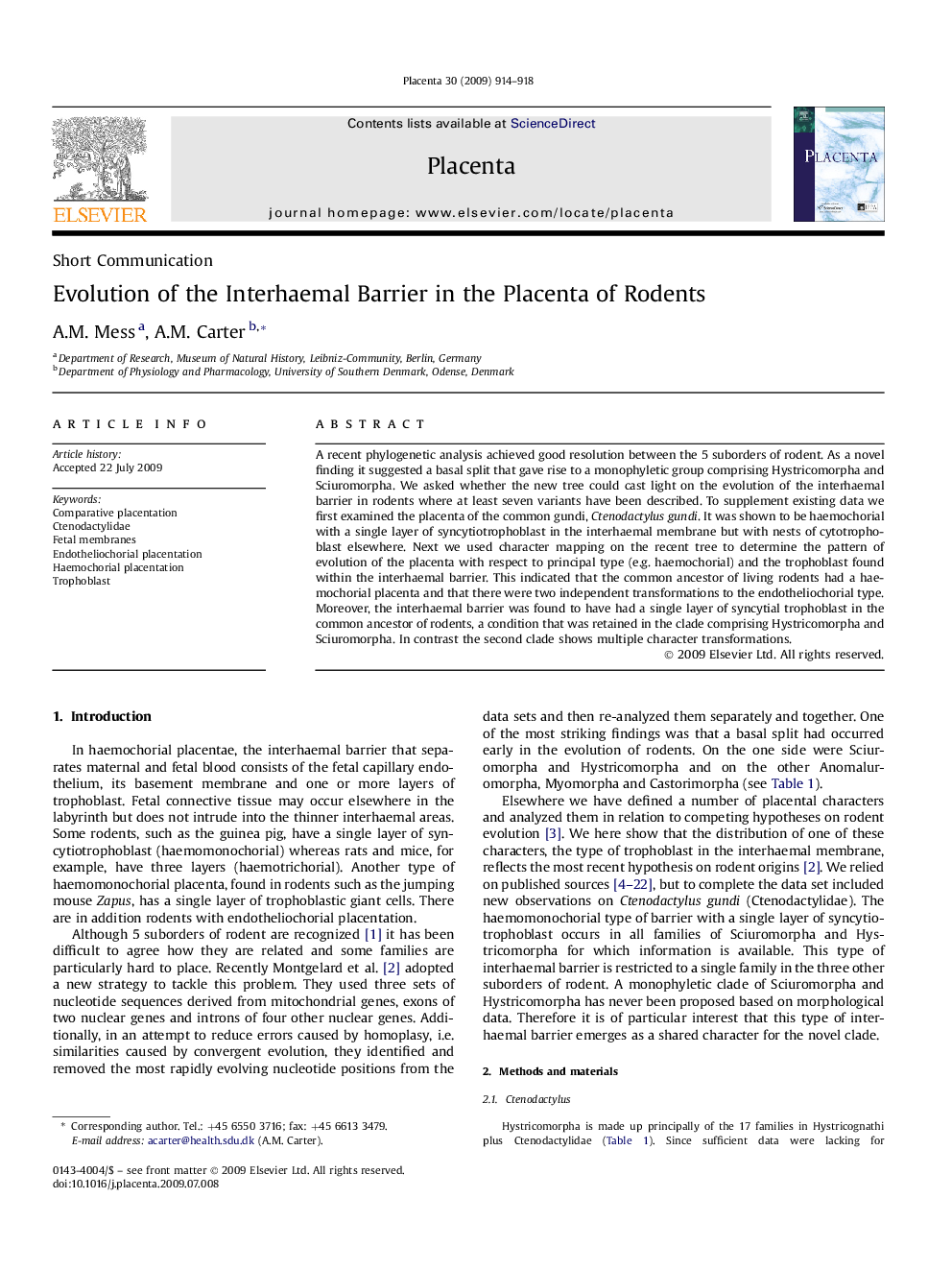| Article ID | Journal | Published Year | Pages | File Type |
|---|---|---|---|---|
| 2789287 | Placenta | 2009 | 5 Pages |
Abstract
A recent phylogenetic analysis achieved good resolution between the 5 suborders of rodent. As a novel finding it suggested a basal split that gave rise to a monophyletic group comprising Hystricomorpha and Sciuromorpha. We asked whether the new tree could cast light on the evolution of the interhaemal barrier in rodents where at least seven variants have been described. To supplement existing data we first examined the placenta of the common gundi, Ctenodactylus gundi. It was shown to be haemochorial with a single layer of syncytiotrophoblast in the interhaemal membrane but with nests of cytotrophoblast elsewhere. Next we used character mapping on the recent tree to determine the pattern of evolution of the placenta with respect to principal type (e.g. haemochorial) and the trophoblast found within the interhaemal barrier. This indicated that the common ancestor of living rodents had a haemochorial placenta and that there were two independent transformations to the endotheliochorial type. Moreover, the interhaemal barrier was found to have had a single layer of syncytial trophoblast in the common ancestor of rodents, a condition that was retained in the clade comprising Hystricomorpha and Sciuromorpha. In contrast the second clade shows multiple character transformations.
Keywords
Related Topics
Life Sciences
Biochemistry, Genetics and Molecular Biology
Developmental Biology
Authors
A.M. Mess, A.M. Carter,
